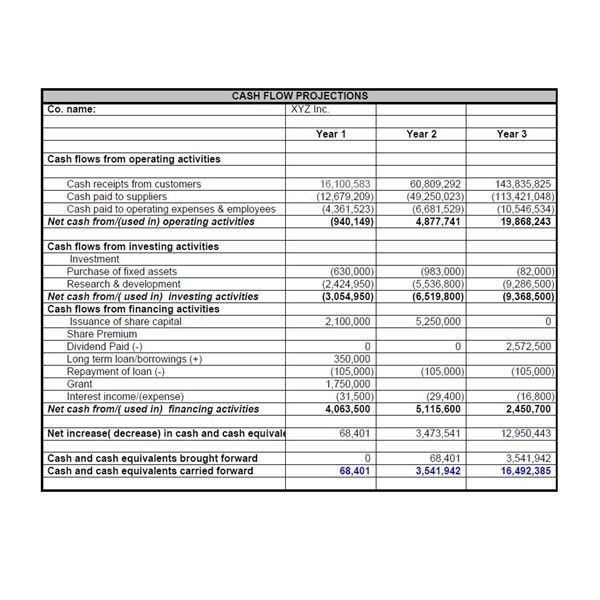Important Cash Flow Ratios for Cash Flow Analysis
Post on: 23 Апрель, 2015 No Comment

Cash Flow Ratios that are Important for Cash Flow Analysis
Did you mean ?
Sign up
You can opt-out at any time.
Please refer to our privacy policy for contact information.
The cash flow statement is one of the three most important financial statement a business owner uses in cash flow analysis. The concept of cash flow is different from the concept of profit or net income and the business owner should think of each in different terms and analyze each from different perspectives. There are financial ratios that help the business owner that focus on net profit and those that focus on cash flow.
Cash flow analysis uses ratios that focuses on cash flow and how solvent, liquid, and viable the company is. Here are the most important cash flow ratios with their calculations and interpretation.
1. Operating Cash Flow Ratio
The operating cash flow ratio is one of the most important cash flow ratios. Cash flow is an indication of how money moves into and out of the company and how you pay your bills.
Operating cash flow relates to cash flows that a company accrues from operations to its current debt. It measures how liquidity a firm is in the short run since it relates to current debt and cash flows from operations.
Operating Cash Flows Ratio = Cash Flows From Operations/Current Liabilities where:
Cash Flows from Operations comes off the Statement of Cash Flows and Current Liabilities comes off the Balance Sheet
If the Operating Cash Flow Ratio for a company is less than 1.0, the company is not generating enough cash to pay off its short-term debt which is a serious situation. It is possible that the firm may not be able to continue to operate.
2. Price/Cash Flow Ratio
The price to cash flow ratio is often considered a better indication of a company’s value than the price to earnings ratio. It is a really useful ratio for a company to know, particularly if the company is publicly traded. It compares the company’s share price to the cash flow the company generates on a per share basis.
Price/cash flow ratio = Share price/Operating cash flow per share where:
Share price is usually the closing price of the stock on a particular day and operating cash flow is taken from the Statement of Cash Flows. Some business owners use free cash flow in the denominator instead of operating cash flow.
It should be noted that most analysts still use price/earnings ratio in valuation analysis.
3. Cash Flow Margin Ratio
The Cash Flow Margin ratio is an important ratio as it expresses the relationship between cash generated from operations and sales. The company needs cash to pay dividends, suppliers, service debt, and invest in new capital assets, so cash is just as important as profit to a business firm.
The Cash Flow Margin ratio measures the ability of a firm to translate sales into cash. The calculation is:
Cash flow from operating cash flows/Net sales = _____%.
The numerator of the equation comes from the firm’s Statement of Cash Flows. The denominator comes from the Income Statement. The larger the percentage, the better. More
4. Cash Flow from Operations/Average Total Liabilities
Cash flow from Operations/Average total liabilities is a similar ratio to the commonly-used total debt/total assets ratio. Both measure the solvency of a company or its ability to pay its debts and keep its head above water. The former is better, however, as it measures this ability over a period of time rather than at a point in time.
This ratio is calculated as follows:
Cash flow from Operations/Average Total Liabilities = _______% where:
cash flow from operations is taken from the Statement of Cash Flows and average total liabilities is an average of total liabilities from several time periods of liabilities taken from balance sheets .
The higher the ratio, the better the firm’s financial flexibility and its ability to pay its debts.
5. Current Ratio
The current ratio is the most simple of the cash flow ratios. It tells the business owner if current assets are sufficient to meet current debt. The ratio is calculated as follows:
>Current Ratio = Current Assets/Current Liabilities = ______X
where:
both terms come from the company’s balance sheet. The answer shows how many times over a company can meet its short-term debt and is a measure of the firm’s liquidity. More
6. Quick Ratio (Acid-Test)
The quick ratio, or acid test, is a more specific test of liquidity than the current ratio. It takes inventory out of the equation and measures the firm’s liquidity if it doesn’t have inventory to sell to meet its short-term debt obligations. If the quick ratio is less than 1.0 times, then it has to sell inventory to meet short-term debt. which is not a good position for the firm to be in.














